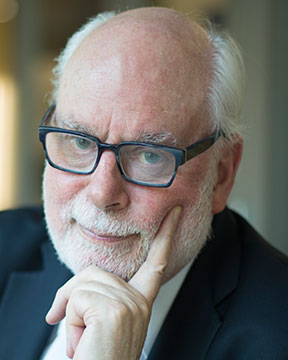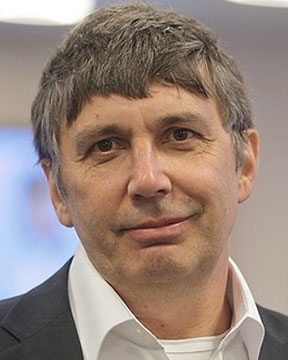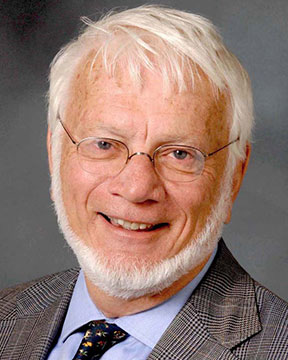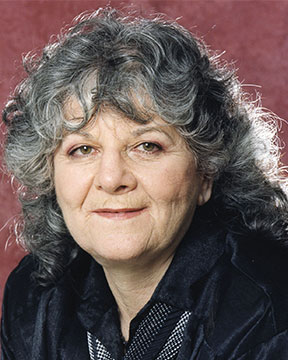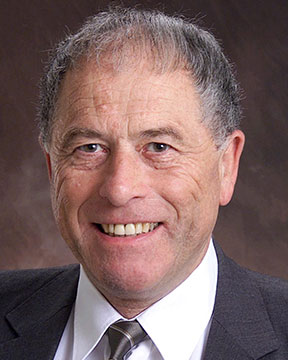ORALS
SESSION: ManufacturingWedAM-R4
Transport / Crashworthiness of Vehicles: Passive and Active Safety | Mamalis International Symposium on Advanced Manufacturing of Advanced Materials and Structures with Sustainable Industrial Applications |
| Wed Nov, 7 2018 / Room: Sao Conrado (50/2nd) | |
| Session Chairs: Ryuichi Tomoshige; Session Monitor: TBA |
11:20: [ManufacturingWedAM01]
Perspective Ways for the Development of Endoprosthesis of Human Hip Implants Sergiy
Sheykin1 ;
Athanasios G.
Mamalis2 ;
Raul S.
Turmanidze3 ; S.
Sohan
4 ; I.
Rostotskiy
4 ; Dmitrii Vladimirovich
Efrosinin
5 ;
1Bakul Institute of Superhard Materials, Kyiv, Ukraine;
2PC-NAE, Demokritos National Center for Scientific Research, Athens, Greece;
3Georgian Technical University, Tbilisi, Georgia;
4Bakul Institute of Superhard Materials, Kiev, Ukraine;
5Bakul Institute for Superhard Materials, Kiev, Ukraine;
Paper Id: 174
[Abstract] Nowadays, the greatest spread in the practice of endoprosthesis replacement was obtained by a metal/UHMWPE (Ultra-high-molecular-weight polyethylene) friction pair. As a rule, in this case a CoCrMo alloy is used as the material of the metal component. However, from the point of view of biocompatibility, this alloy is not the best. Among the metals and alloys in this indicator, pure titanium is the best choice. Nevertheless, its usage as a component of the friction pair is hampered by the increased tendency to seize with structural materials (including the UHMWPE) and low mechanical characteristics.
To receive the needed level of operating specifications of friction pair, pure titanium/UHMWPE, the technology for modifying the surface layer of the spherical head by surface plastic deformation and subsequent thermal diffusion nitriding was elaborated. This technology made it possible to achieve an optimal combination of strength and adhesive inertness of the working surface of the titanium head [1]. The technology for shaping the working surface of a spherical head was developed, including preliminary precision and finishing. The technologists use tools used at the Institute of Superhard Materials. The technology made it possible to obtain a product conforming to the international standard ISO 7206-2-2013 (Ra <0.05 mm with deviation from non-circularity less than 0.006 mm). Comparative tests of nitrided pure titanium and CoCrMo alloy in pair with the surgeon performed on the ring-plane face friction machine in blood plasma (closest in composition to the synovial fluid of the natural joint) showed a clear advantage of nitrided pure titanium: friction in a pair of nitrided Grade 2 / surgical below by 25%, linear wear by 60%.
A promising alternative to the evolutionary development of the traditional endoprosthesis of the femoral head is also considered a fundamentally different technological solution— hybrid endoprosthesis of the femur head with a heart of metal and an outer layer of oxide ceramics [2]. This idea is implemented, for example, in the product with the commercial brand Oxinium™ (Smith & Nephew, Memphis, US).
The idea of a multilayer endoprosthesis of the femoral head was suggested by the authors in [3]. The outer part in the form of a spherical shell of artificial sapphire or ZrO<sub>2</sub>-ceramics has a cavity filled through a special heat-conducting technological layer in several layers by a metal core. In the metal core, there is a tapered hole for fixing the head. Due to the use of sapphire (it does not have harmful impurities in the interstitial space), such endoprosthesis is chemically inert, is electrically neutral, has an increased wettability of the surface, and has biological compatibility (activity). An additional advantage of this technical solution is the possibility of introducing a layer of polymer material that improves the damping properties of the endoprosthesis.
References:
[1] Increasing of functionality of c.p. titanium/UHMWPE tribo-pairs by thermodiffusion nitriding of titanium component / I.M. Pohrelyuk, S.E. Sheykin, S.M. Dub, A.G. Mamalis, I.Yu. Rostotskii, O.V. Tkachuk, S.M. Lavrys // Biotribology Volume 7, September 2016, Pages 38-45.
[2] Pezzotti, G. Artificial hip joints: The biomaterials challenge / G. Pezzotti, K. Yamamoto / J. Mech. Behav. Biomed. Mat. 3 1 (2014) 3-20.
[3] Спосіб виготовлення головки ендопротеза кульшового суглобу: пат. 105064 U Україна МПК А61F2/32 (2006.1) / С.В. Сохань, Л.Ф. Головко, Н.О. Мельник-Кагляк, 201503079; заявл. 03.04.2015; опублік. 10.03.2016, Бюл. 5-3 с.
SESSION: ManufacturingWedPM1-R4
Energy | Mamalis International Symposium on Advanced Manufacturing of Advanced Materials and Structures with Sustainable Industrial Applications |
| Wed Nov, 7 2018 / Room: Sao Conrado (50/2nd) | |
| Session Chairs: Nikoloz Chikhradze; Session Monitor: TBA |
14:00: [ManufacturingWedPM105]
New Designs of Rotors with Variable Geometry Parameters in Dynamics and Their Effective Use in Aviation and Wind Energy Raul S.
Turmanidze1 ; Paata
Kervalishvili
1 ; Giorgi
Popxadze
1 ;
1Georgian Technical University, Tbilisi, Georgia;
Paper Id: 162
[Abstract] Famous specialists of many leading scientific centers of the world unambiguously prove that, from the date of existence of airscrews, the problem of creating a design for screws with the possibility to change key geometrical parameters in dynamics is particularly acute. It stems from the fact that existing screws are not optimal for all operational phases of units with different functions. The solution to this problem is possible only by using screws of changeable geometry (SCG), which has the capability to simultaneously change the diameter of the screw and a corner of installation, and twist the blades in dynamics.
As a result of production and tests for various designs of the screw's demonstration model with changeable geometrical parameters in dynamics, it was proven that, for example, for aircraft use the WHIG gives the chance of especially effective optimization of aircraft flight in vertical takeoff and landing (SVVP), ensuring the maximum diameter and the minimum twist in the hanging mode and vice versa, the minimum diameter and the maximum twist at horizontal flight. In particular, at a variation of diameter of trial model of a rotor, for example, from - 4,1 to - 5,6 m and twists of blades within 80-300 it is possible to increase aircraft loading capacity on average 1.6 times, or to increase flight speed 1.4 times, or respectively to reduce fuel consumption.
For wind power installations, especially with big capacities, use of the WHIG will give the chance to expand the range of the maximum efficiency values of installation at changes of wind speed in a wide range from 3 to 20-22 m/s, and also provide installation operability at high wind speeds of 22-35 m/s), at which the existing installations would not be in a functional state. The solution of this problem became particularly salient because of the infamous accident in Fukushima, Japan. These events compelled leaders from major countries of the world to find as many opportunities as possible to replace a share of atomic energy with other types in the overall power balance.
Unfortunately, methods that are more effective than wind power in terms of economic and ecological criteria, and potentially mastered volume of energy, do not exist.
Preliminary aerodynamic and economic calculations carried out, by means of the design developed by us, proved that it is possible to increase the annual volume of each wind turbine's energy by a minimum of 100%.
In the presented work, different options for the rotor designs developed by us, with the indication of their advantages to each case will be analyzed. Further, on the basis of the results from aerodynamic tests of working models that were carried out, recommendations for effective use of each option in these or those concrete branches of equipment, are given.
Additionally, the method of accumulation for the received wind and solar energy, which is very effective at prime cost, is an pressing world problem for which there is development costing some hundreds of millions of US dollars annually, will be offered and analyzed.
The proposal refers to those countries that have hydroelectric power plants with medium and large capacities— for instance where there are already high dams and reservoirs built .
The core of our proposal is that it is possible to mount the greatest possible number of wind stations and solar panels around a reservoir. When there is an order for electric energy they will work for its production, and when orders are not present, they will work for water pumping back from the lower reservoir in its top part. It will give the opportunity to have all power sources working constantly for profit, day and night, day after day, and all the year round. A very effective method of location and operation of solar modules will also be elaborated and presented.
The proposed method of accumulation of wind and solar energy gives an opportunity for effective operation of wind and solar stations, the repeated use of accumulated water and, most importantly, fundamentally changing the principle of projecting and constructing of hydroelectric power stations of medium and large capacities. In addition it is necessary to underline the increase of the safety of hydroelectric stations, the reduction in the flooding of the country's cultural values and decrease area of the mirror surface of the reservoir, which adversely affects the changing climatic conditions of this region.
References:
[1] R.Turmanidze, L.Dadone. "Variable Geometry Rotor". Monograph, Publishing House of University of Petrosani. 2003, Romania, 164 p.
[2] R.Turmanidze, L.Dadone, G.Sanadze. Increase of Flight and Technical Characteristics of Flying Vehicles By Means of Application of the Variable Geometry Rotor. Materials of the 5th Forum of the Russian Helicopter Society. Moscow, 2002. p. VI39-VI48. AGARD. 1998. A selection of test cases for the validation of large eddy simulations of turbulent flows. Agard Advisory Report 345. North Atlantic Treaty Organization.
[3] R.Turmanidze, L.Dadone, J.-J.Philippe, B.Demaret, Investigation, Development and Tests Results of the Variable Geometry Rotor. 33 rd. European Rotorcraft Forum. Kazan, 10-14 September 2007, Pages 11.
[4] R.Turmanidze, О.Rukhadze, R.Bidzinashvili, Е.Rukhadze, Designing Fundamentals of Investigation Equipment of Rotors with the Parameters of Variable Geometry. International Scientific Journal "Problems of Mechanics". 1 (42)/2011. Georgia, Tbilisi. 2011. 8 p.
[5] R.Turmanidze, О.Rukhadze, R.Bidzinashvili, Е.Rukhadze, Investigation of the Variable Geometry Rotor in Dynamics. International Scientific Journal "Problems of Mechanics". 2(43)/2011. Georgia, Tbilisi, 2011. 8 p.



